Hashtags are the new kid on the block in our everyday life and have roots buried deep down in today’s pop culture. Some love them, others totally don’t. Few know how to use them, while the majority just thinks it’s cool to have 1-2-5-…-50 hashtags in a post. Some like playing with embedded words following a hashtag, others know how to get the most out of this little social media wonder. Either way, the hashtag has reached a point where it no longer goes unnoticed and uncredited.
So how come that in the last couple of years everybody started using it like crazy? And yet, how come there’s so little intelligence on the algorithms they work by, not to mention tips and educated pieces of advice on how to rank high in social platform hashtag pages?
These questions along with many more led us to the resolution of digging each social medium and find out what algorithm lies behind the hashtagged posts and what makes some shine, and others limp.
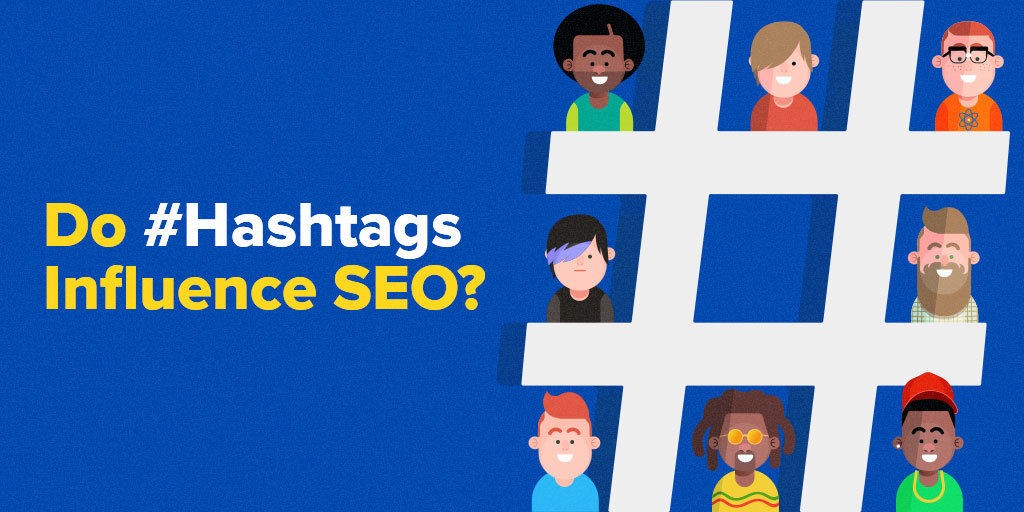
The thing is though, there’s not many of us who know this whole hashtag game through and through. First, we need to know what’s this whole story with the hashtags in social media, second, then we have to understand their workings, third, we should see whether they can benefit our SEO campaigns in the long run. In short, are they any good to us? And, most importantly, how can we go all out on them to see results:
- What Is a Hashtag and How It Was Born
- How To Rank High on Social Media Using Hashtags
- Why You Should Double Down On Hashtags
1. What Is a Hashtag and How It Was Born
A hashtag is a discovery tool, heavily used by both social media users and brands. You can easily refer to it as a new function of search, a stream of conversation used by those having a mutual interest in something. Hashtags usually encompass contemporary trends, known facts, particular interests or simply put, anything you write after the pound symbol.
All major search engines have and index hashtags: Google, Bing, and Yahoo. They’re a great invention of the 21st century, one that gets people together, sharing common interests and inspiring one another. They also help users jump into discussions by only following hashtag feeds or pages, hence facilitating communication, bonding, and growth. In short, they have the gift of increasing traffic and engagement.
The hashtag is a word or phrase following a hash/pound mark (#), widely used on social media channels, such as Twitter and Instagram, to identify, gather, and provide conversations and activity on a specific topic.
In the beginning, hashtags were used only by the social media early adopters, yet shortly after advertising and marketing campaigns joined the fan team. Nowadays, hashtags have infiltrated themselves into every corner of our social lives, needless to say into the contemporary culture and advertising campaigns.
Hashtags are now part of the pop culture.
However, every trend comes with its good share of madness and blunders. Given the nowadays fashion of using hashtags on everything you write online and offline, it happens that many people don’t really know how to use it. Therefore, poor hashtags are often misused, misunderstood, abused, and misplaced.
Also known by their technical name – metadata tags, hashtags are searchable links blessing your website with referral traffic. Established in 2007, they keep this habit up and shining, still enchanting users and brands alike. Although Ludwig van Beethoven would disagree.
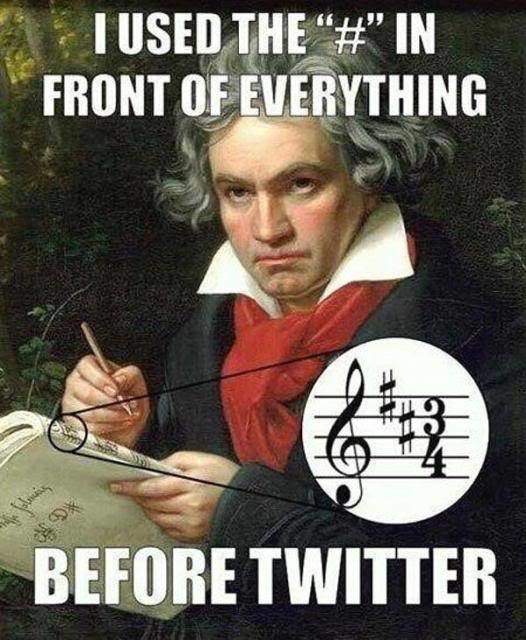
IRC (Internet Relay Chats) were the first to use hashtags, establishing themselves as a precursor of today’s social platforms. Resembling in form and style with today’s social websites, IRCs were live chats and messaging means where people could gather and share similar interests. When adopted by Twitter, hashtags were initially used for tweet chats, running like open groups where people could talk about a particular topic. Chris Messina was the mastermind behind the hashtag integration on Twitter. His idea was to incorporate a tracking tool on the platform, one that could be easily accessed by people in, say, the tweet itself.
how do you feel about using # (pound) for groups. As in #barcamp [msg]?
— Chris Messina (@chrismessina) August 23, 2007
Although Twitter rejected the idea, Messina’s followers and Twitter users like the idea and implemented it right on spot. And thanks to them, Twitter is now the only place hashtags were used first (not to forget that Twitter was also one of the first major mobile-friendly sites in history). If only a couple of decades before, the pound symbol has been nothing more than the means to get back to the main menu after spending time talking to the phone or navigating through phone systems, the hash sign has then received a new life. From then on, people who had similar interests were able to connect to each other in an evergreen group where posts would always be live and fresh.

Remember when we said marketers were drawn to this new social media invention? The thing with the hashtag is that, whenever you want to optimize conversations, titles, content and any other type of text form with hashtags, your activity will get more visible to the audiences both on social media and on search engines. For marketers, hashtags are a way to engage their brand with their market, and they usually deploy 3 types of marketing strategies:
- brand or campaign hashtags – create a hashtag for your particular brand/campaign (#CocaCola)
- trending hashtags – seize the trends of the moment and post content related to them (#WinterOlympics)
- content hashtags (hashtag random words in your post).
Hashtag words work as brand mentions if you want. Marketers all over the world use them to gather and analyze what others are talking about their brands. Hashtags track conversations and keep them safe on pages. Hashtagged-words are like long-tail keywords – when spot on, they promise low search traffic, (sometimes) low competition, and high conversion.
As already mentioned before, Google crawls and indexes hashtags, be they from Twitter, Google+, or blog posts – they’re all there.
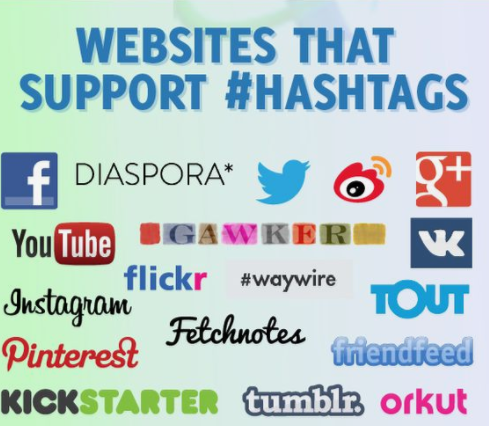
source: intelligenthq.com
Although listed first in the image, Facebook is not the most popular social platform to use hashtags. In the beginning, Facebook was against the idea of the hashtag but eventually adopted it on their platform, after seeing Twitter’s engagement success. Most marketers and SEO experts saw hashtags as a smart alternative to paid adds that popped out of nowhere in front of people and didn’t have the same success. Hashtags were relevant and organic, hence better.
Slowly but steadily, Google+ followed and started including and supporting hashtags on their platform in May 2013. Looking back, Google+ and Google as search engine did a way better job with hashtags than Facebook did. Facebook lacks the meaning, while Google made them an integral part of the SERPs and social platform.
However, hashtags depend on different rules dictated by social channels, which are not similar to one another. You can’t apply the same SEO strategy to all of them, as each and every one has a different approach to hashtags. So let’s see how you can rank high in SERPs and hashtag pages with a hash mark.
2. How To Rank High on Social Media Using Hashtags
It’s a good habit to sort all the junk out of our lives, and the same principle applies to hashtags as well. We need to ignore all the spammers who use popular hashtags that have nothing to do with their post or people randomly playing with words after the hash mark and learn what’s there that truly makes a hashtag post successful. Needless to say, we need to act quick as hashtags have a rather short lifespan, contrary to the ways they affect SEO.
How does a word or phrase preceded by a pound symbol impact SEO and search position? What’s the algorithm behind hashtags that makes some posts stand out in Top Stories (Instagram) and some in Most Recent? Why does the Twitter hashtag feed seem chaotic and doesn’t look to follow a clear set of rules (be they engagement, freshness, page authority, followers etc? Could it be that hashtagged posts are ordered following an algorithm that mixes your search with your location and your interests? Our questions are to join the other chorus of inquiries found in Google autocomplete.

On our way to finding the answers to our questions, we realized we can’t take more than an educated guess on how social platforms rank hashtag posts on their timeline and what you should do in order to succeed with your hashtag marketing strategy. Afterall, this would be a guess made on other guesses, since nobody actually knows social media/search engines algorithms, but only try to read their behaviors and changes. Plus, we wouldn’t be the only ones to try:

source: makelight.com
How To Use Hashtags on Twitter for Maximum Engagement
Given the little information we could find about what’s the algorithm behind hashtag pages, we had to look at the algorithm Twitter uses for their usual posts. However twisted and complicated it seems, one thing is certain: Twitter’s really secretive and stingy when they’re to give information on their workings. There are many educated assumptions on how Twitter might rank tweets and display them on the feed – so our first thought was that maybe the same situation stands for hashtags a well.
As if things weren’t tangled enough, on March 15, 2016, Twitter changed to a new algorithm that displayed a non-chronological selection of tweets on the top feed.
| Tweets you are likely to care about most will show up first in your timeline. We choose them based on accounts you interact with most, Tweets you engage with, and much more. | |
 |
Twitter team |
Just like on any other major social media platform, engagement seems to be an important factor in the Twitter timeline algorithm. It not only impacts your online relationship with your following and friends but also determines what you’ll see (first). In addition, tweets obey the rule of thumb – relevancy. That means freshness, overall engagement (like, retweet, click, favorites, external shares, time spent on post), author of the post (what relationship you have with them, how often you have interacted with them) and your activity (how often you log in, how much time you spend on the platform etc).
| When you open Twitter after being away for a while, the Tweets you’re most likely to care about will appear at the top of your timeline – still recent and in reverse chronological order. The rest of the Tweets will be displayed right underneath, also in reverse chronological order, as always. | |
 |
Mike jahr |
| Former Senior Engineering Manager at Twitter @mjahr | |
So, the logic is this: should you have skipped a few days or months since you last visited Twitter, once you eventually sign in, Twitter will show you posts in reverse-chronological order so that you’d be taking things over from where you last left them. These being said, is’ obvious – it all looks natural and clear now: Twitter doesn’t want you to miss on anything that might impact you. Twitter is faithful.
However, if you’re not really in the mood of revising everything you’ve been missing out while you were “outside Twitter”, you can always click “Happening Now” and check what’s cooking at that very moment on your timeline.
Anyways, if you want to rank high with your tweets, then you’d better start using hashtags. The thing is though, you cannot apply any rule comes to your mind, or those that work on other social websites. You need to know the game. And studies show that tweets with hashtags had 2 times more engagement than those without, plus 55% more retweets.
Speaking of Twitter hashtag techniques, the most effective tweets include not one thousand or one hundred, but 1-2 hashtags. Avoid adding too many or else you can ruin the audience flow to your post. The former 140, now 280 character-limit should make it obvious that hashtags should engage too much space. You are allowed to use as many you wish in your post, but hashtags won’t perform as good as you’d expect them to.
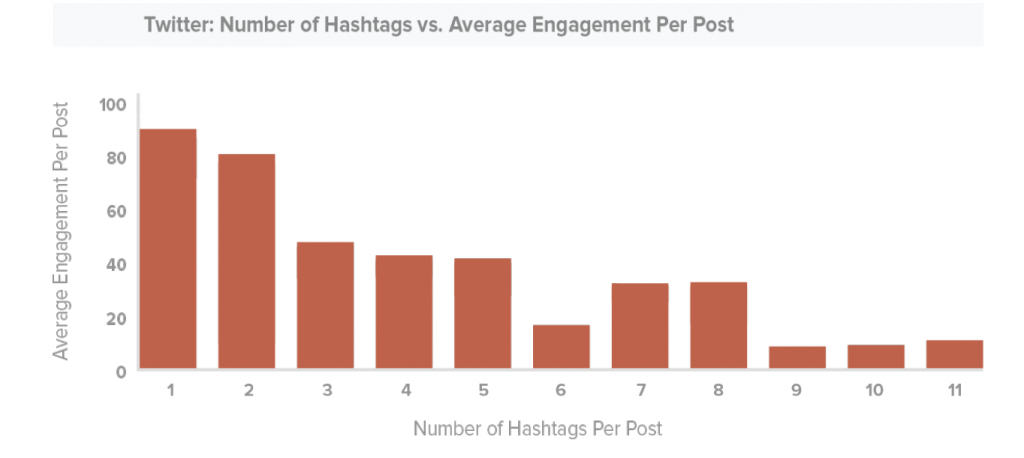
source: searchenginewatch.com
Last but not least, make your hashtags relevant to and a natural part of the tweet. Hashtags should make sense inside a post, summarize, if possible, the topic of the post. Steer off from spamming associations, such as attaching an irrelevant hashtag to your post just because it’s a popular one. Your audience would rather be irritated by it, than thankful and inspired.
Instagram and Hashtags – A Story of Power and Charm
If we were to make a top listing how hard it is for marketers to nail the hashtag ranking algorithm on various social platforms, Twitter would be head of the list, closely followed by Instagram, then Google+, and Facebook.
The Instagram hashtag pages can be divided into two sections: “Top Posts” and “Most Recent.
Instagram is a little bit easier to read, at least if we’re to look at the “Most recent” section of the hashtag page. I have also conducted an experiment and posted a random photo from my phone on Instagram, using the #healthyeatging and #butterchicken pound symbols. And voila! they did appear in the Most recent section. However, if we are to look at the second screenshot, our pic doesn’t show up in the first three posts but is rather outstripped by other posts. The reason is that that particular hashtag is a very trending one, so additional posts appear only a few seconds after another. And this proves that hashtags and visibility have a very short lifespan, should they not have a very large and faithful audience to vote, comment on, like, and save the posts.
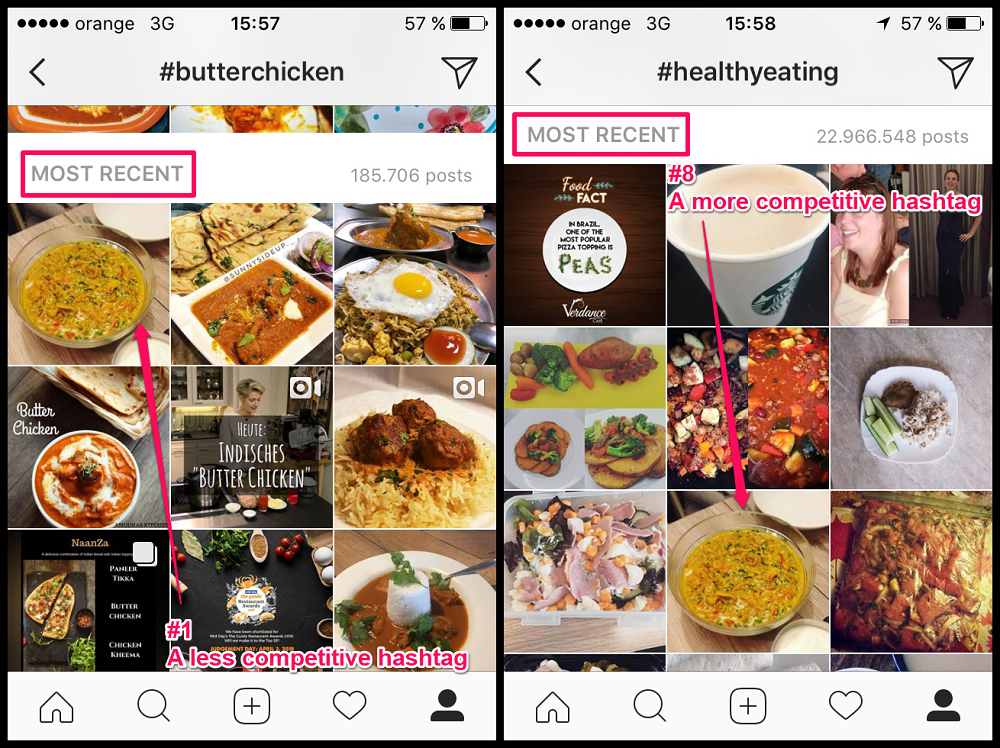
Today, Instagram is probably the best place to use hashtags in. It is heaven to hashtags. The more pound marks a post has, the bigger the audience. And digital marketers know it and use them to their maximum potential. The success recipe is to use 9 hashtags – these bring the best engagement ( studies show a rise of 28,548 interactions per post).
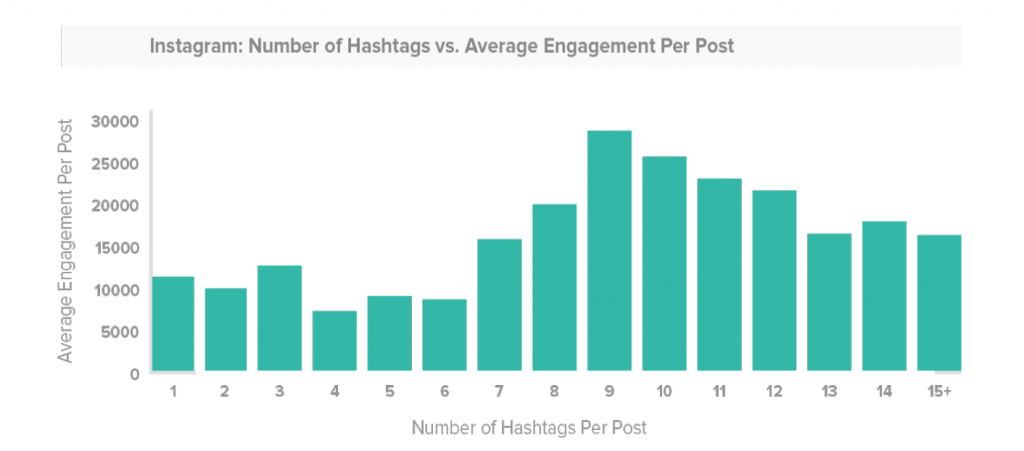
source: searchenginewatch.com
Even stories marked with a hashtag can get on the hashtag pages.

The good thing is that there’s no character or hashtag limit, hence you can add up to 30 hashtags per post. You have the chance to rapidly expand your audience, provided you have attractive content. You know it already – content is king. Along with many other factors that might matter only if you want to get a spot in Top Posts.
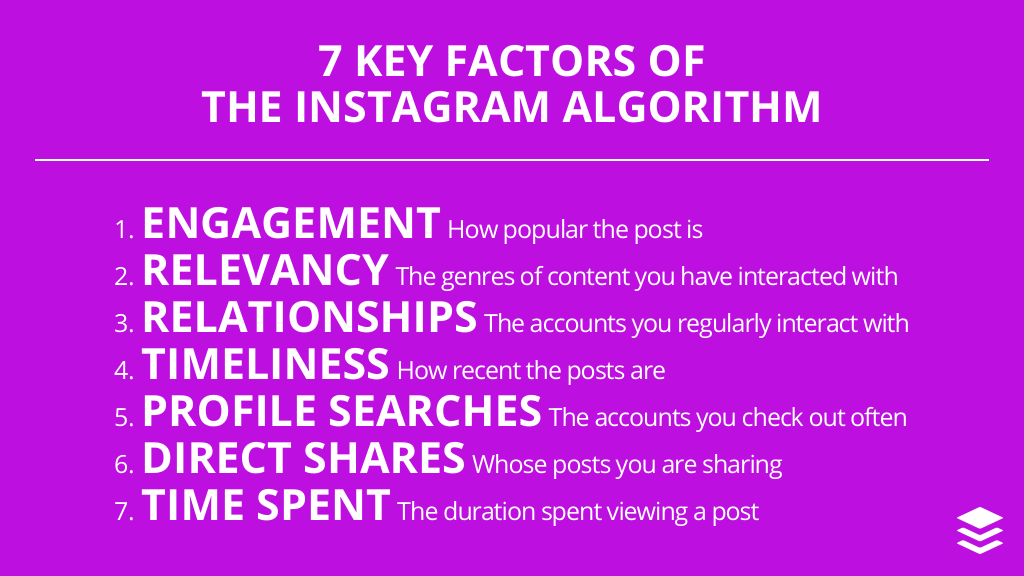
source: https://blog.bufferapp.com/instagram-algorithm
Longer hashtags have higher engagement. Just as with long-tail keywords, the more specific hashtags are, the better. Usually, the more generic and simpler ones bring less traffic.
Instagram doesn’t like giving specific information on how hashtags work on their platform, opting for neutrality in answers.

Do Facebook Hashtags Offer Enough Exposure?
When it comes to Facebook, there very little we can say in regard to their hashtag approach. They were the last ones to adopt this social media invention and didn’t seem to be willing to invest too much in it, like the two aforementioned social platforms did, creating a whole religion around it.
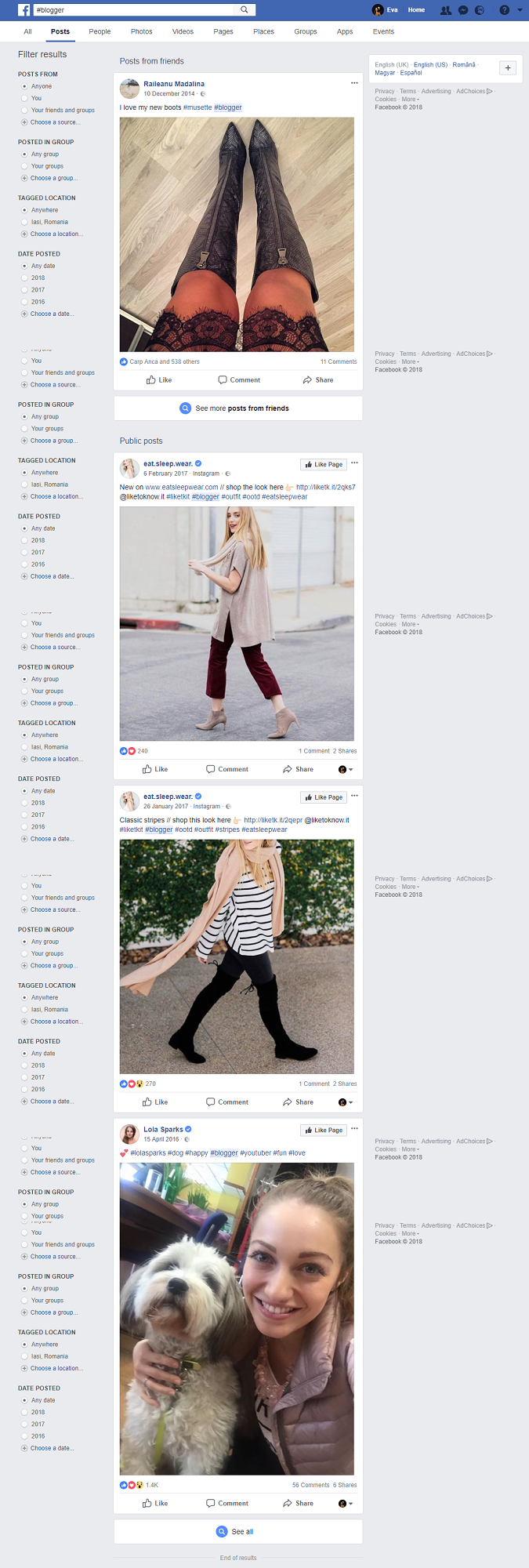
Similar to Instagram, people are able to see only posts either from their friends or coming from profile pages with public settings. So one step would be to set your brand page as visible as possible, that is to promote it. Then, pair your highly-engaging and attractive posts with brand/campaign, trending, or content hashtags.
There’s no limitation as to how many hashtags a post should have, hence, the increased interaction depends only on the right choice of numbers. The same Trackmaven studies show that more hashtags a Facebook post has, the weaker the engagement will be. If you want to score big from the very beginning, keep in mind that one hashtag brings more traffic than more – approximately 1,771.
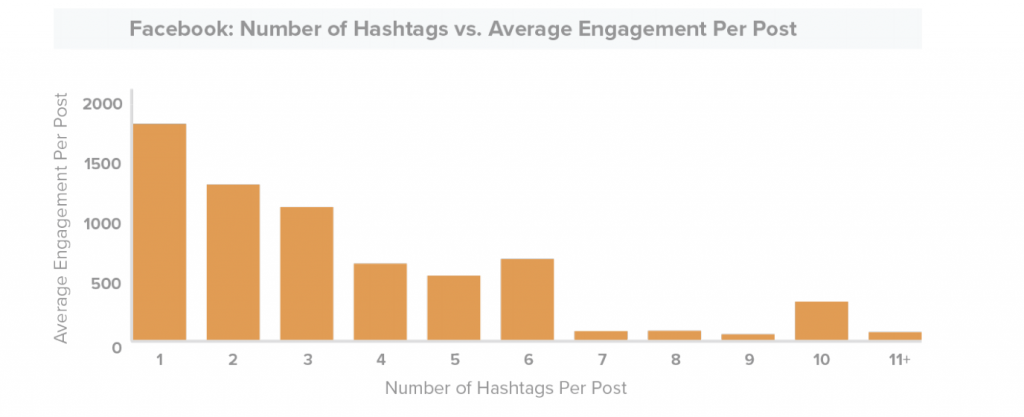
source: searchenginewatch.com
When it comes to the order algorithm behind how Facebook displays hashtag results, most probably it would be a mix of the following:
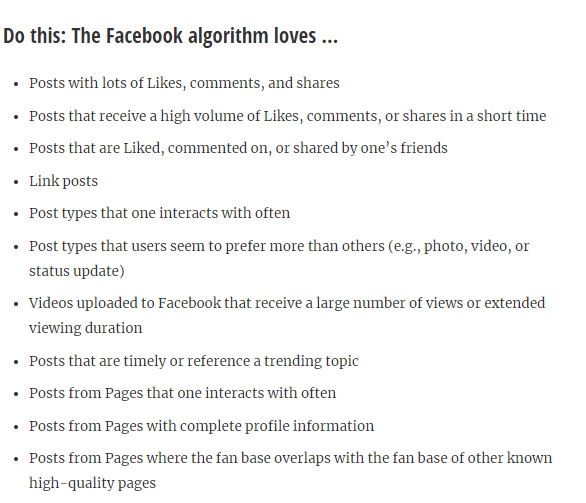
source: https://blog.bufferapp.com/facebook-news-feed-algorithm
Google+ Only Shows You Posts From Your Agenda
At a quick search, it seems Google is no longer showing Google+ hashtag results in their SERPs. There’s no Google official press release announcing the fact that you can now see hashtagged posts only when on the Google+ platform.
Google+ works similarly to Instagram and Facebook – you can only see posts from your agenda and other public posts. Truth be told, Facebook and Google+ are the least targeted social websites among the four. Although you can perform a hashtag search for any keyword that pops into your mind, you can also see what’s the trending at the moment by checking the “Hot Topics” section.
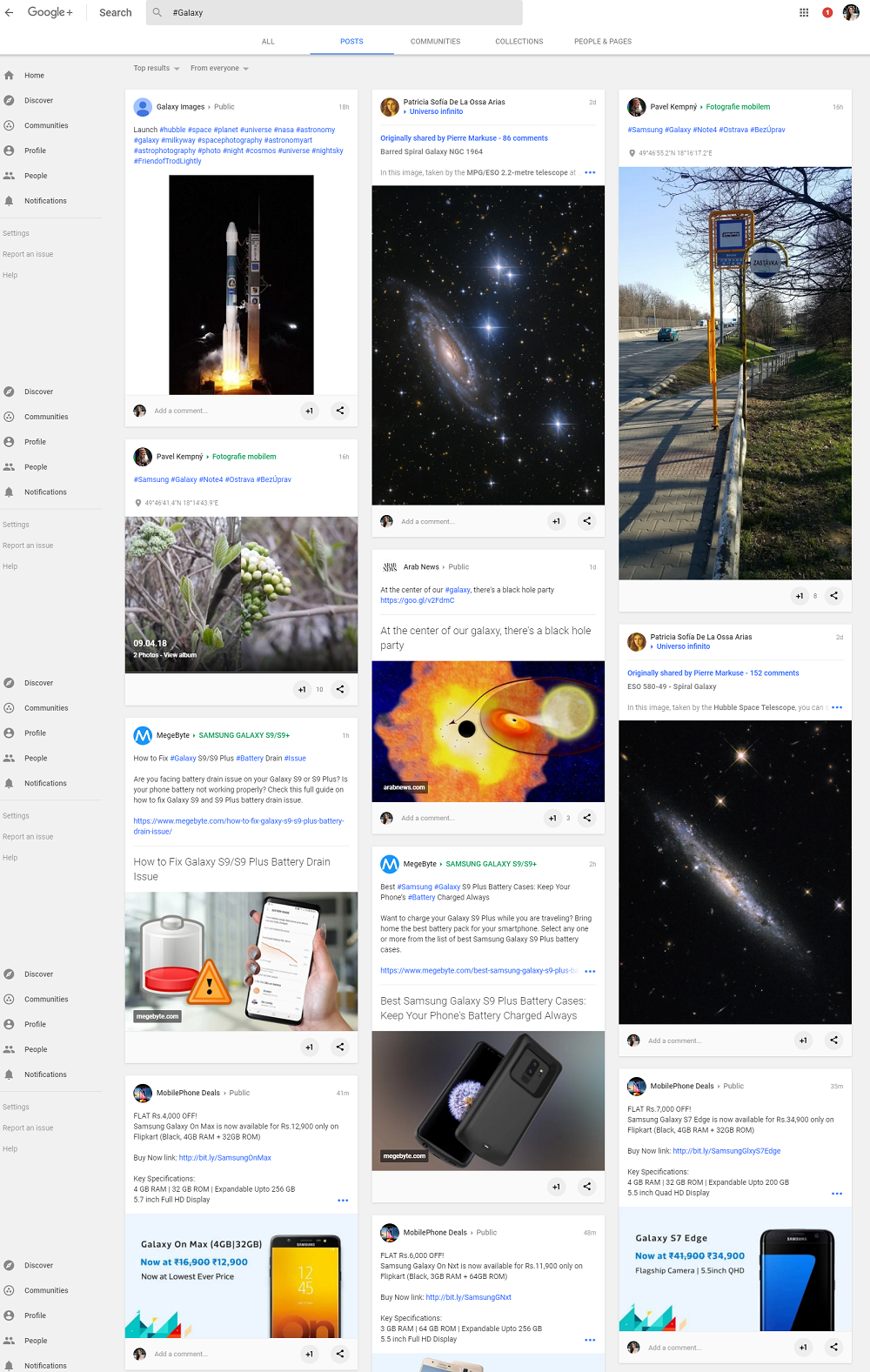
Why You Should Double Down On Hashtags
Hashtags mean networking, discovering, community building opportunities, popularity, advertising, and loads of traffic. They work somehow as a library where you can find everything related to a certain subject (e.g. #Grammys, #Oscars). They do work but they show results only when you’re not doing overkill.
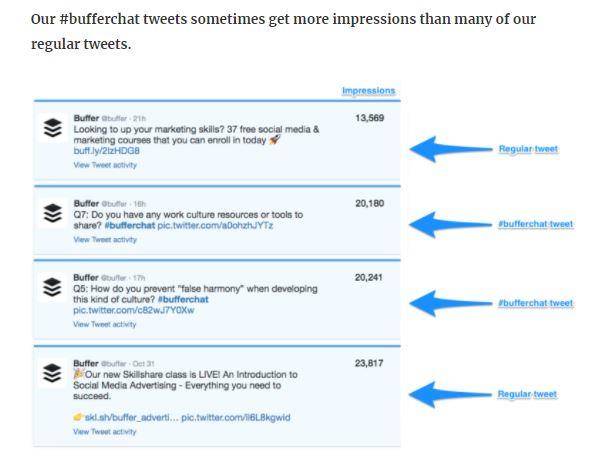
Knowing that Google indexes tweets for a long time now, you should double down on them by also adding hashtags that could increase brand visibility and impact your SEO strategy with bigger awareness and brand searches. By opting to use hashtags in your social media marketing strategy, you’ll secure your brand with more opportunities to have their name, content, and social media activity placed in Google search results.
Knowing how to use the hash mark on your Twitter, Instagram, Google+, and Facebook posts you’ll land a helping hand to users in their quest of finding your brand as a response to their interests and needs. Although speed is crucial in order to gain the best visibility and engagement, and the display of a hashtagged post has a rather short lifespan, hashtags can drive consistent long-term traffic to your site, one which would find it easier to come than to leave.
Last but not least, being the first one to tweet something on a trending hashtag matters a lot to visibility. Thus, monitor trends and be ready to post something truly engaging and unique. Should you ever need to find the most popular hashtags, be they suited to trends or for your particular post, check Hashtagify.me.
Should you happen to know how hashtags really work and what’s the best way to rank high in SERPs and timelines, do leave us a comment. We’re curious to know more on this topic, that’s for sure.
The post Do Hashtags Influence SEO? Here’s How to Rank High Using Hashtags appeared first on SEO Blog | cognitiveSEO Blog on SEO Tactics & Strategies.
Via Marketing http://www.rssmix.com/
No comments:
Post a Comment